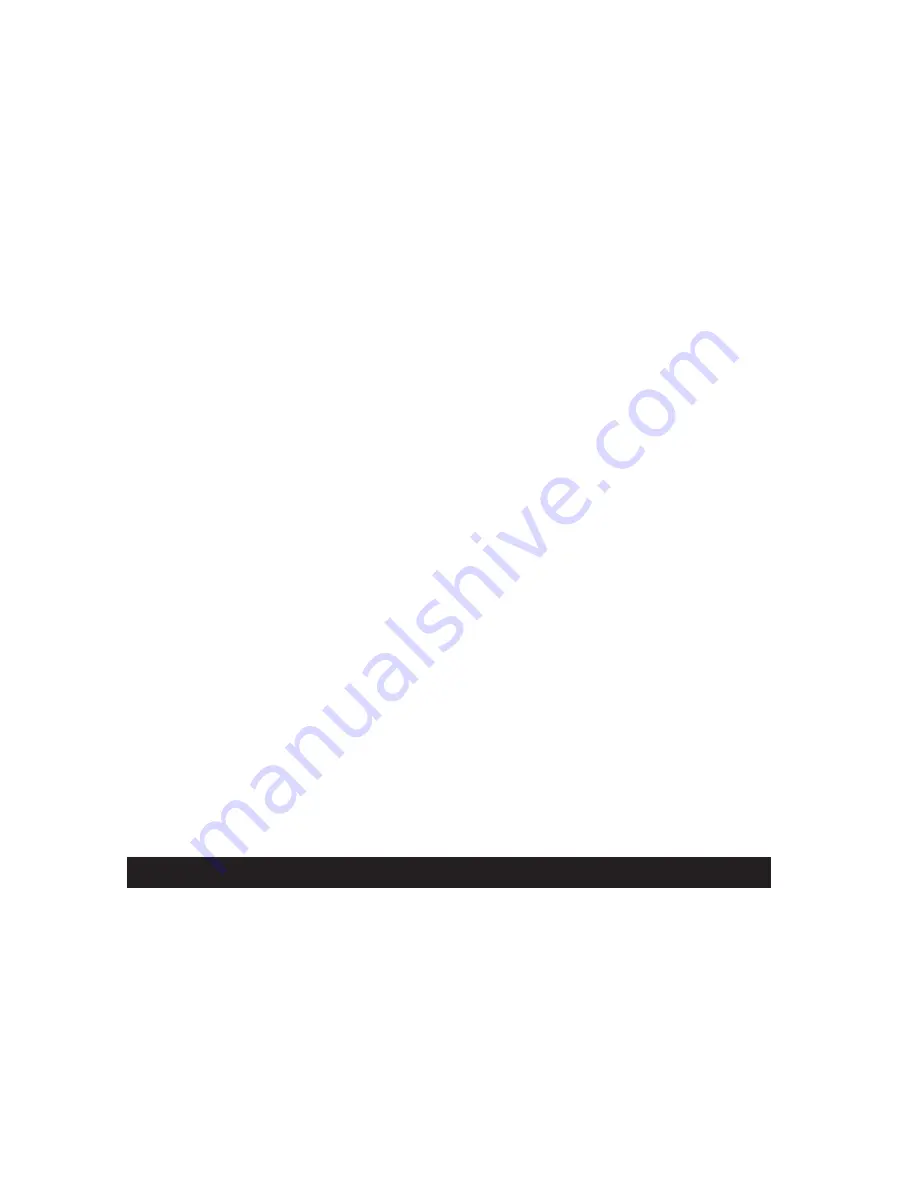
Over-Voltage Protection (Red LED on Inverter and remote outlet will light) - The Inverter will
automatically shut down when the input voltage exceeds 15 volts DC.
Overload Protection (Red LED on Inverter and remote outlet will light)
The Inverter will automatically shut down if the continuous draw exceeds its maximum wattage rating.
When the Inverter is at or near maximum output, an alarm will sound. When the alarm sounds you
need to disconnect the device(s) to bring the Inverter output down to an acceptable level. If you
continue to use the Inverter at or near the maximum output, it will eventually overheat and shut down.
If you exceed the maximum Inverter output, the alarm will sound and the Inverter will automatically
shut down. The red fault indicator will light and the alarm will continue to sound. The Inverter must be
reset after an overload condition.
To Reset the Inverter
1.
Turn off the Inverter using the ON/OFF switch on the Inverter or the remote outlet ON/OFF
button, depending upon how the Inverter was controlled.
2.
Unplug all devices.
3.
Turn the Inverter back on using the ON/OFF switch on the Inverter or the remote outlet ON/OFF
button.
4.
Before devices are reconnected, verify the total wattage of the devices to ensure they are less
than the rating of the Inverter.
Temperature Protection
The Inverter is equipped with a cooling fan. Depending upon the load output and the temperature of
the Inverter, the cooling fan will turn on and off as required to cool the Inverter if needed.
If the temperature reaches approximately 149°F (65°C) the Inverter will shut down automatically. Turn
off the Inverter and allow it to cool for a minimum of 15 minutes. Before starting up again, verify the
total wattage of the devices being powered.
Common Problems
Power tools will start but will not continue to run - Some induction motors (motors without
brushes) may require 2 to 6 times their wattage rating in order to start up. If the power tool runs
only momentarily when power is applied, try to leave the power tool on while quickly and repeatedly
turning the Inverter on and off.
Buzzing in audio systems - Some inexpensive stereo systems will emit a buzzing sound from their
speakers when operating from the Inverter. This is because the power supply in the device does not
adequately filter the modified sine wave produced by the Inverter.
Television interference - The Inverter is shielded and filtered to minimize interference with TV
signals. In some cases, especially with weak TV signals, some interference may be visible. Try the
following corrective measures:
•
Position the Inverter as far away as possible from the television, the antenna and the antenna cable.
•
Adjust the orientation of the Inverter, the antenna cable and the TV power cable to minimize
interference.
•
Use high-quality, shielded antenna cable.
Operating a microwave - The power rating used with microwave ovens is the “cooking power” which
qualifies as the power being “delivered” to the food being microwaved. The actual operating power
requirement rating is higher than the cooking power rating. This is usually referenced on the back of
the microwave. If the operating power requirement cannot be found on the back of the microwave,
check the owner’s manual or contact the manufacturer.
CARE AND MAINTENANCE
Storage
Store this Power Inverter in a cool, dry area and keep it away from direct sunlight, heat, excessive
humidity and dampness. Storage temperature should be between -4°F and 185°F (-20°C and 85°C)
with the humidity between 10% and 90%.
Cleaning
Do not clean or wipe the Power Inverter with solvents or chemical materials. If necessary, remove dirt































